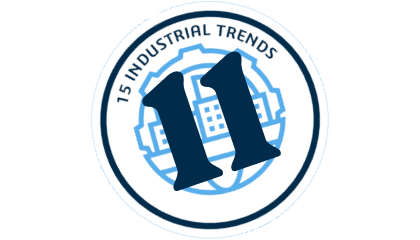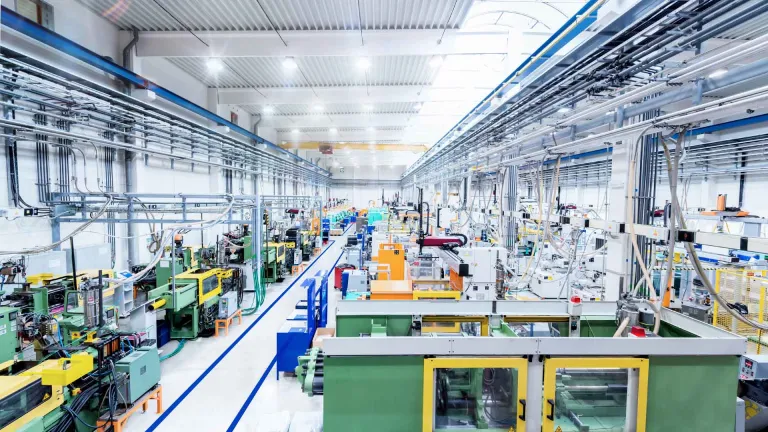Managing Supply Chain Disruptions Amidst Geopolitical Uncertainty
Geopolitical tensions can have far-reaching impacts on manufacturing. Here’s what to understand, and how to prepare.

Does your business have what it takes to navigate an increasingly turbulent world?
What’s happening?
In the world of geopolitics, the landscape can change in the blink of an eye and challenges suddenly cascade.
On 24th February 2022, Russian tanks arrived in Ukraine. The US, the EU, and other nations quickly responded with sanctions. Germany cancelled the Nordstream 2 gas pipeline.
Meanwhile, grain exports from the agricultural regions of Ukraine and Russia stalled, and prices shot up by 34%. Energy prices also skyrocketted, triggering historical rates of inflation, and precipitating a cost-of-living crisis across Europe. In September, OPEC agreed to curtail production, further squeezing energy markets.

All around the world, the stable rules-based order of the post-Cold War consensus, and the markets that it supported, is under strain. The global economy, still reeling from the supply chain disruptions caused by the global pandemic and trade tensions between the world’s biggest economies, is increasingly fragile. For manufacturing industries, these are trying times.
Curious about how other manufacturing industries respond?
Respond to today's challenges with our bespoke solutions
Why does it matter?
“There are lots of ways geopolitics impact manufacturers,” says Florence Verzelen, Executive Vice President, Industry, Marketing and Sustainability at Dassault Systèmes. “Trade tension, for example, has made it difficult to plan effectively if you have global sales and local manufacturing as borders can now close or IP issues between countries can happen.”
Manufacturing benefits from stability. Companies need to know their suppliers will be able to provide them with components and materials they need. They have to know they will be able to buy electricity and keep the lights on.
And yet, the past couple of years have been far from stable, with multiple crises forcing significant changes in the ways manufacturing industries operate as they looked to adapt to survive. In the absence of that long-term stability, manufacturers need to be able to react more effectively to moments of uncertainty. Much of this need has been expressed in building more resiliency in supply chains.
Florence Verzelen points out: “A lot of business models were based on the fact that industry was supposed to have no stock, maximizing their cost efficiencies through just-in-time inventory systems. The supply chain disruptions have shown that it doesn't work because if you don't have the right component at the right time, basically, your manufacturing plant might have to stop.”
Beyond this reactive need to build resilience, manufacturers are facing pressure to address the changing demands of new generations of customers. These shifting desires require businesses to radically rethink their business models, and how they source, produce, and sell their goods.
New government regulations will also heighten the need to transform the way businesses operate. As an example, Florence Verzelen highlights the upcoming EU digital product passport, which will impose strict sustainability regulations on incoming products in an effort to reinforce circular economy practices.
“The digital passport is going to apply to all importers to the EU – which is more or less everyone – starting as early as 2026 for the first elements of that digital passport for fabric, electronics and battery manufacturers,” she says. “If you’re a battery company, with long development cycles, that’s basically tomorrow if you look at the amount of R&D, engineering, and design of processes that goes into battery manufacture.”
Manufacturing Industries on the Edge: Transformation from the inside out
Having established what manufacturers can do embrace innovation, we now look at what they can do with technology once they have it, and how it can be used to address risk and pursue new kinds of value.
How can I prepare?
Mitigating supply chain disruption and adapting to the changing demands of geopolitical shifts and shocks, be it governmental, environmental, or economic, starts with understanding your operations – how they are working; where they are most vulnerable; and what decisions you need to take for maximum resilience.
This is why manufacturers are increasingly looking to leverage digital solutions to give them real-time information on their operations, and gain the visibility and traceability needed to both anticipate and adjust to new challenges.
“Digital is an important part of the answer to these challenges because it builds in agility and helps you react quickly if markets get closed to you. By working through a virtual twin, you can adapt operations to pivot to another market very easily,” says Florence Verzelen.
For example, to make a more resilient supply chain, manufacturers need to model it. This enables them to not only optimize it for today but also simulate how it will need to evolve to meet the changing demands of tomorrow. What are the alternatives if the existing chain is suddenly disrupted? How quickly can we adapt to shifting customer demands? If new regulations come in, do we have enough visibility and control across our value chain to comply?
The next decade will see the rise of the virtual testbed where multiple scenarios can be planned and prepared for digitally, enabling businesses to make the right decisions and can get it right first time.
Digital is an important part of the answer to these challenges, because it builds in agility and helps you react quickly if market get closed to you. By working through a virtual twin, you can adapt operations to pivot to another market very easily.
Other Trends
Discover more with our Manufacturing Industries
- Aerospace & Defense
- Consumer Packaged Goods & Retail
- Home & Lifestyle
- High-Tech
- Industrial Equipment
- Marine & Offshore
- Transportation & Mobility
Bridge the gap between the virtual and real world to accelerate from concept to operations.
Virtual Twin Experiences for Sustainable Innovation – Helping Manufacturers Improve Consumer Products
Simplify and accelerate innovation to create more valuable consumer experiences.
Modular supply chains make it easier for manufacturers to master complexity and strengthen their supply chain resilience against volatility.
Digitalize manufacturing to deliver made-to-order innovation.
Accelerate the sustainable transformation of the Marine & Offshore industry.
Driving vehicle innovation toward the mobility of the future
THE WORLD NEEDS MANUFACTURERS
A MANIFESTO FOR CHANGE










